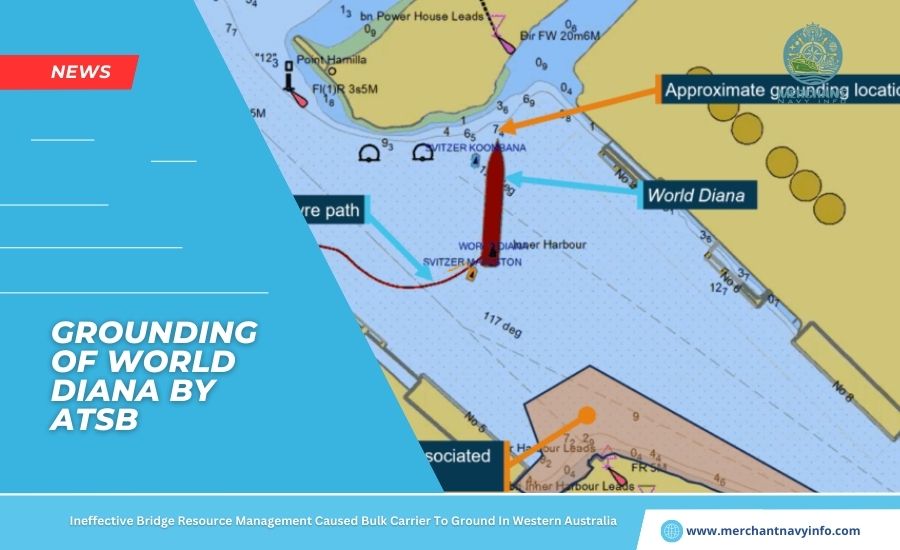
Ineffective Bridge Resource Management Caused Bulk Carrier To Ground In Western Australia
An Australian Transport Safety Bureau (ATSB) investigation has found that ineffective bridge resource management caused a bulk carrier to the ground in the Port of Bunbury in Western Australia.
The incident occurred on 22 April 2023 when the 229-metre bulk carrier World Diana. Registered on the Isle of Man, departed Bunbury with the assistance of a port pilot and two tugboats. After being towed out of the berth, the vessel had to turn around at the turning pier to leave the port.
“The detour route commenced earlier than planned, reducing the space available,” said Chief Steward Angus Mitchell. “The vessel’s speed was then allowed to increase until there was no longer room to turn safely and the bow of the vessel grounded on a shoal east of the port entrance.”
The vessel sustained minor damage to its hull but could sail offshore, and fortunately, no pollution was reported.
What ATSB Investigation Said?
The ATSB investigation concluded that bridge resource management during the piling was ineffective. “Bridge resource management is an essential component of safe stacking,” Mitchell said. “Effective use of available resources reduces the likelihood of one person making an error and reduces its impact.”
The report states that proper use of the available portable command module, effective communication, and active involvement of the World Diana Bridge tea. Tugboat captains would have enabled the timely detection of deviations from the plan and avoided the grounding. “The specific information and constraints of the departure plan were known only to the pilot. Making it difficult for the bridge team to raise concerns during the activity,” Mitchell added.
“However, if the captain was an experienced ship operator. Familiar with the vessel’s motion characteristics, and had been actively monitoring the turn. The vessel’s early movement and increase in headway should have become apparent.”
In addition, the ATSB concluded that the Port of Bunbury did not have adequate procedures in place for the approach. Also, departure planning for large vessels moored on the starboard side of berth no. 3. “This reduced the information available to the pilots about these vessels. These movements were shared with the bridge team and tugboat commanders to ensure a shared understanding of how the exercise was conducted,” Mitchell concluded.









